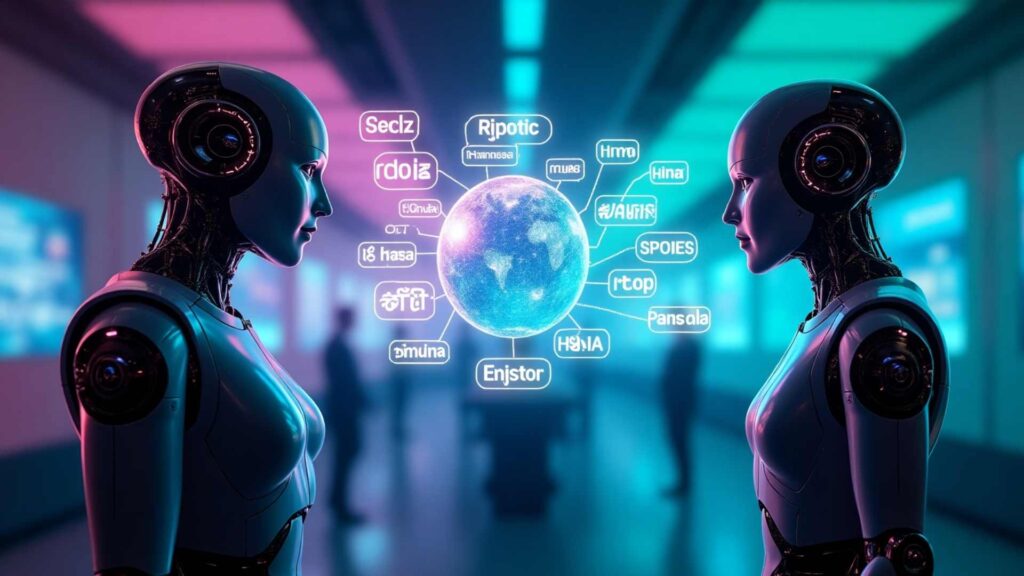The year 2025 will be a milestone in the history of AI, as Multilingual AI Agents are going to change global communication contexts. Such advanced systems have become more than mere translation tools but rather a fully fledged digital assistant that can learn cultural peculiarities, local dialects, and context-related needs. Due to the globalization of business and the shift to work remotely, MLL AI Agents can be called the light between different linguistic groups. Their capability to process, comprehend and answer in various languages at the same time has transformed customer care, content production and business in the world such that they cannot be ignored by any organization that is aiming at reaching a global customer base and efficiency.
Why Multilingual AI Is Critical for Global Campaigns
- Market Penetration: The ability of businesses to easily penetrate into new markets by communicating to the local communities in their languages would also enhance customer confidence and interest in the business hence, market penetration.
- Cost Efficiency: Organizations do not spend that much on human translation services and international customer support teams but can keep 24/7 availability in all time zones.
- Cultural Sensitivity: These agents know the circumstances of other cultures, and will adjust the messaging accordingly to avoid embarrassing cultural mishaps that will hurt brand image.
- Scalability: Business can scale its customer support capacity over dozens of languages in real time with disproportionate human resource needs.
- Consistency: The brand messaging is the same across all languages and also culturally relevant so that there are common global communication strategies.
- Real time Engagement: Instant replies in the languages of choice of the customers lead to a higher user experience and conversion rates.
Criteria for Evaluating Multilingual AI Agents
1. Language Coverage: Range, and depth of languages covered, regional terminology and industry specific lexicons.
2. Accuracy Rate: The quality of the translation and comprehension of difficult concepts, technical terminology and culturally sensitive materials.
3. Integration Capabilities: Ability to integrate well with current business systems and CRM solutions as well as communication channels to provide smooth operation.
4. Real-time Processing: Responsiveness and capacity to converse with more than one user in various languages without a degradation of performance.
5. Contextual Understanding: Capacity to carry the conversation context across languages and be able to recognize the meaning behind the language and cultural allusions.
6. Customization: Ability to be customized to fit in the demands of the business, industry demands, and brand tone in various linguistic markets.
Top 10 Multilingual AI Agents in 2025
1. Adobe Agent-Orchestrator Ecosystem

Adobe agent-orchestrator is a complete AI orchestration platform that is able to connect multiple AI agents within the creative and marketing ecosystem without any friction. This is an intelligent system that improves customer experiences by using coordinated AI agents to provide personal interactions and content. The platform is a great example of addressing such a scenario because it manages intricate workflows and ensures brand conformity across many languages and cultural settings.
Languages Supported: Supports more than 40 languages and high area localization of creative content and marketing campaigns.
Best Use Cases: Enterprise marketing automation, superb content localization, customer journey, orchestration in the global markets.
Pros:
- Full compatibility with Adobe Creative Suite
- The high-level of content personalization
- Automatic processes of workflow through the teams
- Compliance and security features at enterprise level
Cons:
- High pricing system restricts the accessibility
- Needs technical skills to be implemented fully
- Non-Adobe ecosystem learning curve
- Poor standalone capability with Adobe products
Website: https://business.adobe.com/products/experience-platform/agent-orchestrator.html
2. Smartcat AI Agents

Smartcat transitioned into an AI agent ecosystem and developed into a linguistic-intelligence-focused super-agent, as opposed to a translation management platform. They also offer end-to-end services that include creation of content as well as cultural adaptation of the same through their agents and thus would best suit businesses that need highly advanced multi-lingual content strategies. The platform integrates the experience of humans with AI efficiency to provide culturally sensitive messages.
Languages Supported: Full coverage of over 120 languages including expert support of the emerging markets and minority languages.
Best Use Cases: Localization of Enterprise, Content Marketing across the world, and management of cross-cultural communication.
Pros:
- Comprehensive language knowledge base and culture knowledge
- Human-AI workflow engines
- Sector specific terms management
- Native language expertise quality assurance
Cons:
- More expensive high-quality language pairs
- Complicated installation process in organizations of smaller scale
- Requirement of internet connectivity on features
- Poor real-time support of conversation
Website: https://www.smartcat.com
3. Ringg AI Voice Agents
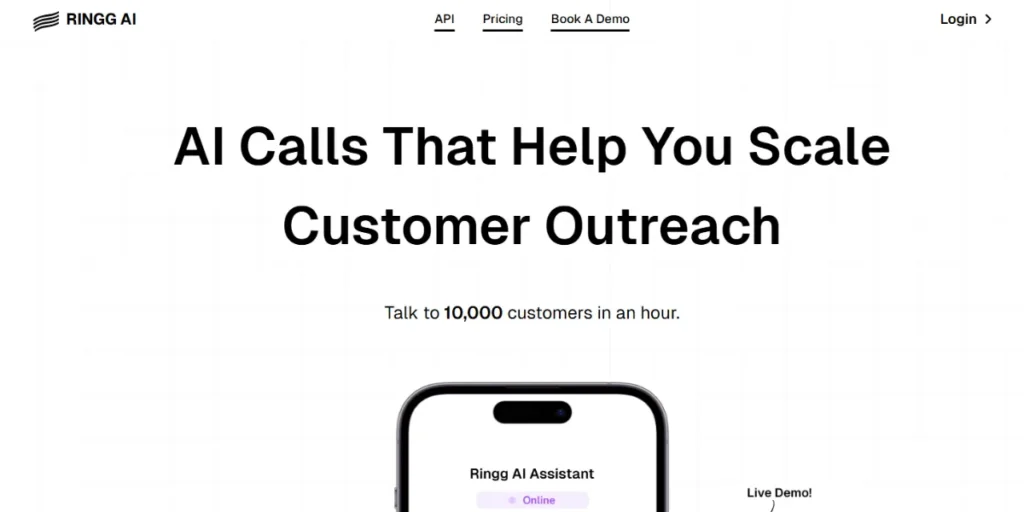
Ringg is a leader in multilingual voice artificial intelligence agents, with a strong ability to operate in real-time and across cultures in terms of verbal communication. Their technology is oriented towards the conversational flow of speech, Supports 25+ major languages with sophisticated accent and dialect understanding of natural voice communications. accent detection, and emotional intelligence in the voice. The platform is especially powerful in customer service applications where people prefer talking to texting.
Languages Supported: Supports 25+ major languages with advanced accent and dialect recognition for natural voice interactions.
Best Use Cases: Multilingual customer support, voice-based sales assistance and call center automation worldwide.
Pros:
- Better voice recognition quality and synthesis quality
- Real time translation and interpretation
- Voice emotional intelligence
- Powerful call center integration features
Cons:
- Few textual forms of interaction
- Demands a stable internet to perform best
- More resources to process voice
- Multi-channel integration is complicated to set up.
Website: https://www.ringg.ai
4. Kruti by Ola Krutrim
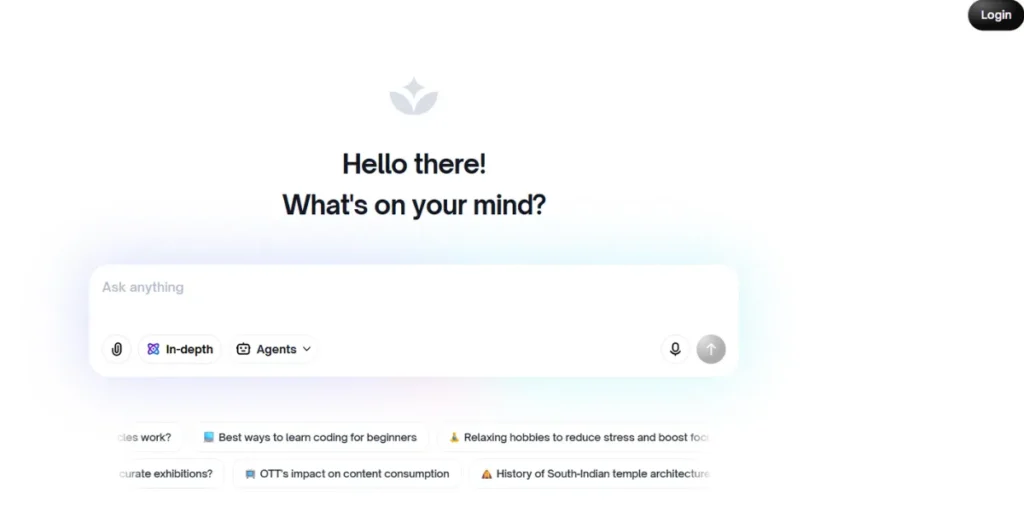
Kruti is India’s first AI assistant with sophisticated agentic capabilities, and is geared towards complex day-to-day tasks as well as supporting various Indian languages. Kruti is based on the state of the art LLM architecture with strong capabilities in comprehending cultural practices in Indian markets as well as a multimodal support to the varied needs of users.
Languages Supported: 13 Indian languages (and 22 regional languages in the future) such as Hindi, Tamil, Telugu, and Bengali.
Best Use Cases: Its best use cases include everyday task automation, food ordering, cab booking, payment of bills, and multimodal content creation.
Pros:
- In-depth knowledge of Indian situations
- Multimodal (text, voice, image, files)
- Localized ecosystem of services
- Low cost pricing of emerging markets
Cons:
- Poor support of international languages
- Concentrated on the needs of the Indian market
- Younger platform that has a developing feature set
- Local service integrations dependency
Website: https://www.kruti.ai
5. Conversica AI Assistants
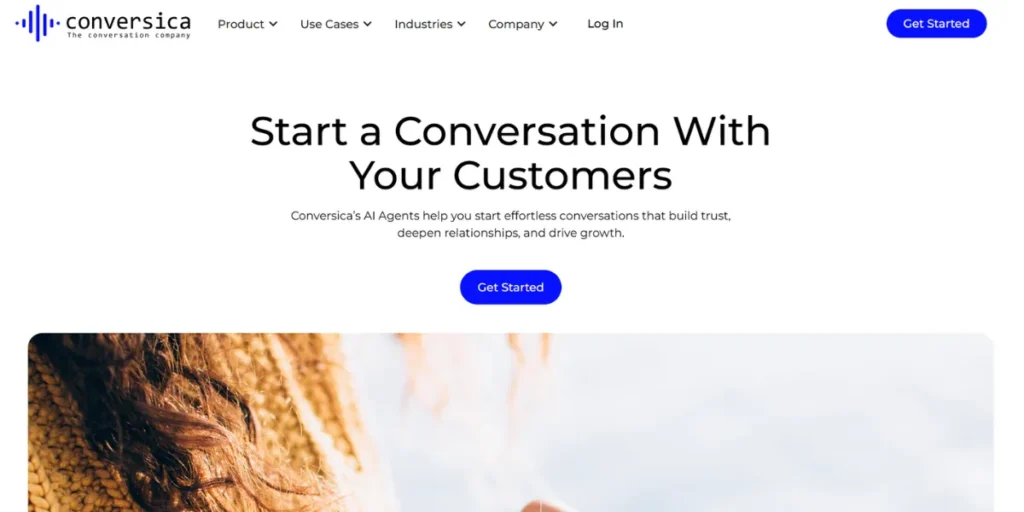
Conversica has been on the frontline in setting up revenue-based AI assistants, which are multilingual and are superb in sales and marketing automation. Their agents are created to cultivate the leads, qualify prospects, and sustain the customer contact across the language barriers. The platform integrates sales intelligence with complex natural language processing to increase revenue.
Languages Supported: Supports more than 30 languages and pays particular attention to business-related communication and sales vocabulary.
Best Use Cases: Sales automation, customer retention, lead qualification and multilingual campaign management.
Pros:
- Proven ROI AI with the focus on revenue
- Lead scoring and qualification
- Smooth CRM connection features
- Niche sales and marketing skills
Cons:
- Limited non sales/marketing applications
- Marked price of higher features
- Needs continuous training and optimisation
- Advanced analytics to non-technical users
Website: https://www.conversica.com
6. Oracle AI Agents for Sales
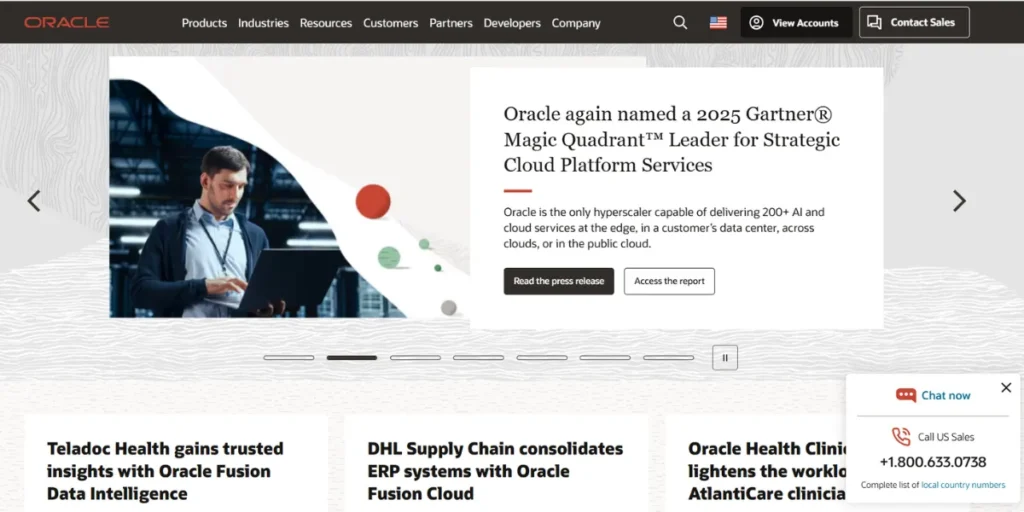
Oracle AI agents belong to the Fusion Cloud suite that is supposed to automate workflows across finance, HR and supply chain. Their multilingual capabilities extend across the entire enterprise functions providing end to end business process automation across the globe with respect to the culture sensitivity in mind.
Languages Supported: Multiple Language Support of over 50 language with enterprise level special business and technical terms databases.
Best Use Cases: Enterprise sales, supply chain management, HR operations, and financial process optimization are the best use cases of it.
Pros:
- Entire ecosystem integration of business
- Advanced analytics, reporting
- Best-in-class security and compliance
- Scalable architecture of large organizations
Cons:
- Costly to install and to maintain
- Complexity requires its special technical staffs
- Prolonged deployment procedures
- Complex feature set to small businesses
Website: https://www.oracle.com
7. IBM Watson Assistant (Multilingual Voice)
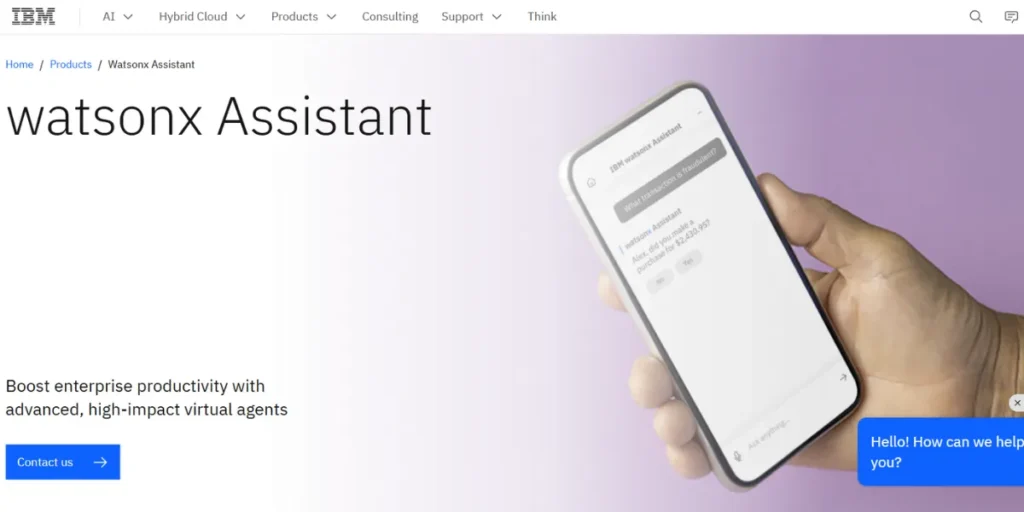
IBM Watson Assistant has become a very sophisticated multilingual conversational AI system with voice, text and visual interface. Shaped by decades of research in AI conducted by IBM, the system provides enterprise solutions with high level of natural language understanding and cultural adaptation.
Languages Supported: High NLP capability and 40+ languages with an understanding of culture awareness.
Best Use Cases: Business customer support, internal, help desk automation and complex query resolution within multi-national businesses.
Pros:
- Mature AI platform enterprise-ready
- Well-developed natural language processing
- Whole-picture analytics and intelligence
- Secure and compliance capabilities
Cons:
- Learning curve is very high
- Increased cost on multilingual advanced features
- Requires much customization to perform well
- Hard non-IBM systems interweaving
Website: https://www.ibm.com/products/watson-assistant
8. Google Gemini 2.5 Models (Flash & Pro)
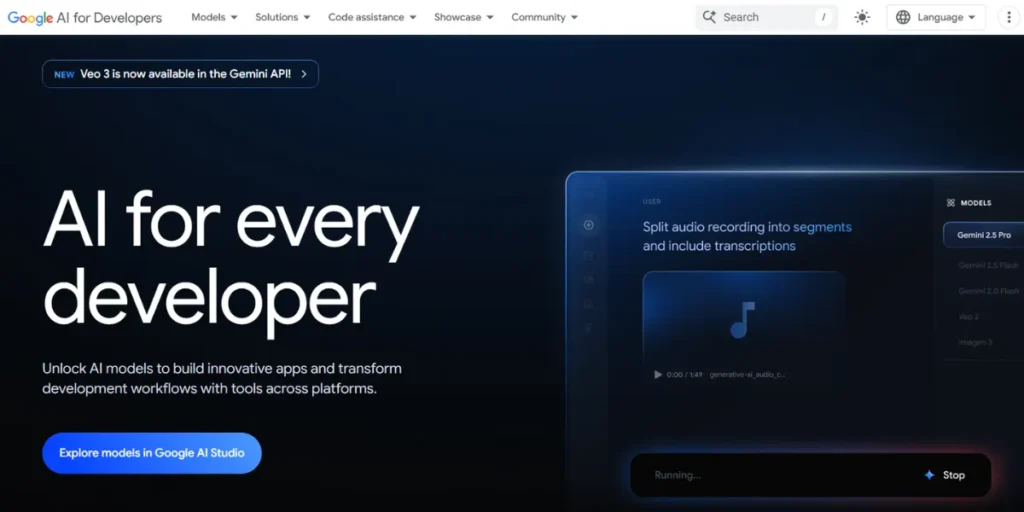
The Google models of the Gemini 2.5 are the most advanced models in the multilingual AI technology and that it has both Flash and Pro versions depending on the application intended to be applied. Such models are also useful in the understanding of multilingual confusing situations and simultaneously provide lightning-fast responses and high cultural awareness in diverse world markets.
Languages Supported: More than 100 languages, high awareness of linguistic differences in the region, and regional dialects.
Best Use Cases: It can be used best in content creation, resolving complex queries, multilingual research and advanced conversational applications.
Pros:
- Language model technology that is best in class
- Extraordinary cross-lingual comprehension
- Fast processing and response Timely processing and response Timely processing and response Timely processing and response
- Integration into Google ecosystem
Cons:
- Technical expertise is required to carry out
- Thoughts on data privacy in sensitive data
- Little customisation vs. enterprise solutions
- Dependence on Google cloud Google cloud
Website: https://ai.google.dev
9. Gupshup Auto Bot Builder
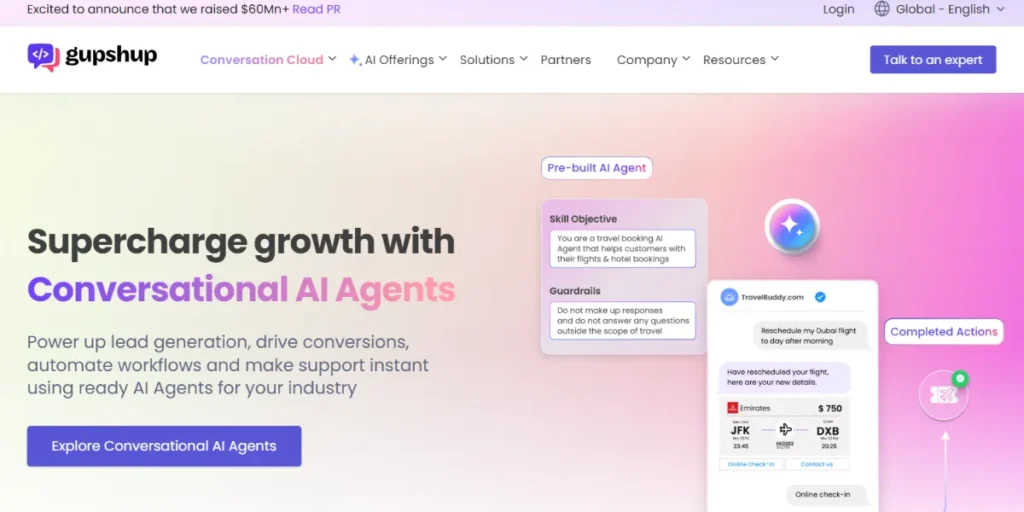
Gupshup is an artificial intelligence-based bot development platform that focuses on creation of smart conversation and AI chatbots which are very good at multilingual customer engagement. The platform is easily accessible and incorporates advanced AI functionality, and thus its utilization can be implemented by any company regardless of its size in the event of the necessity to automate multilingual processes.
Languages Supported: More than 40 languages are supported with a special focus on the emerging economies and local dialects.
Best Use Cases: The best use cases of it are customer service automation, business on WhatsApp, and multichannel conversational commerce.
Pros:
- Simple to construct bot interface
- Messaging Good platform integration of
- Low prices on small firms
- Rapid deployment and set up
Cons:
- The low level AI possibilities
- Depending on third party messaging systems
- Scaling problems on enterprise requirements
- Few features of personalization
Website: https://www.gupshup.io
10. (Bonus) Microsoft Multilingual LLM Initiative

The whole business of Microsoft in respect to multilingual LLM comprises the Azure AI services, Copilot integrations, and particular language models, which are supposed to serve the global businesses. It provides all-in-one AI services that are highly integrated into the Microsoft productivity environment and are strongly multilingual.
Languages Supported: Languages covered 60+ and inelimitable growth and improvement because of international user feedback.
Best Use Cases: Productivity advancement in the organization, document processing, email automated and combined workflow management.
Pros:
- Ms compatibility ease
- Enterprise level security and compliance
- Wholesome incorporation of efficiency devices
- Daily upgrading and features enhancement
Cons:
- The best suited in Microsoft-oriented settings
- Subscriptions can be expensive to accrue
- Non-Microsoft learning curve
- Narrow self-sufficiency
Website: https://www.microsoft.com/ai
Comparative Analysis Table
| Name | Creator | Modalities | Language Support | Best For |
| Adobe Agent-Orchestrator | Adobe | Text, Image, Video | 40+ languages | Marketing automation, creative workflows |
| Smartcat AI Agents | Smartcat | Text, Audio | 120+ languages | Enterprise localization, content translation |
| Ringg AI Voice | Ringg | Voice, Audio | 25+ languages | Voice customer service, call automation |
| Kruti | Ola Krutrim | Text, Voice, Image, Files | 13+ Indian languages | Local task automation, Indian market focus |
| Conversica | Conversica | Text, Email | 30+ languages | Sales automation, lead qualification |
| Oracle AI Agents | Oracle | Text, Data, Voice | 50+ languages | Enterprise operations, supply chain |
| IBM Watson | IBM | Text, Voice, Visual | 40+ languages | Enterprise customer service, complex queries |
| Google Gemini 2.5 | Text, Image, Code | 100+ languages | Content creation, research, analysis | |
| Gupshup Auto Bot | Gupshup | Text, Rich Media | 40+ languages | Chatbot building, messaging integration |
| Microsoft LLM | Microsoft | Text, Voice, Document | 60+ languages | Productivity, document processing |
Highlight Cases & Use Scenarios
- International E-commerce Growth: Multilingual AI Agents allow internet retailers to offer their customers around the world immediate and personal customer service in their own language, addressing product questions, tracking orders, and resolving complaints, across multiple time zones, without the need of human interaction.
- Healthcare Communication: The agents are used by healthcare providers worldwide to communicate with the patients in the language of their choice in order to describe the symptoms and understand the treatment without medical errors and cultural insensitivities.
- Financial Services Support: Banks and fintech firms use multilingual agents to help customers manage their accounts, make enquiries about transactions, and financial advice, staying in line with the local laws and cultural financial operations.
- Educational Content Delivery: These agents are used in online learning systems to deliver course content, respond to student queries and engage in multi-lingual discussions that make education universal.
- Tourism and Hospitality: Hotels, airlines and travel agents employ multilingual agents to help foreign clients make their reservation, get information about the area and help them in emergencies and make their experience travelling in different cultures a lot easier.
- Technical Product Support: These agents are used by technology companies to give technical support, troubleshooting and product information in the native languages of the users which lowers the cost of support and also increases customer satisfaction.
Implementation Challenges & Insights
- Cultural Context Accuracy: Organizations will have to spend resources in training Multilingual AI Agents to be able to learn cultural nuances, local customs, and regional business behaviors to prevent miscommunication and cultural insensitivity that may ruin brand reputation.
- Data Quality Management: The data quality regarding high-quality training data in multiple languages is a resource- and maintenance-intensive process because poor quality will directly affect the agent performance and causes the customer satisfaction levels to decline.
- Integration Complexity: The ability to connect multilingual agents to the existing business systems, databases, and workflows in a seamless manner would in most cases demand a lot of technical skill and may be time-consuming and expensive to the organizations.
- Regulatory Compliance: Various nations have diverse data privacy policies, communication regulations, and AI governance policies that companies have to deal with in the implementation of the multilingual agents at a global level.
- Performance Optimization: Response speed and accuracy over numerous languages and effective management of computational resources are the key determinants of service quality which should be constantly monitored and optimized.
- Continuous Learning Adaptation: Languages are continually changing in terms of slang, terminologies, and cultural references and so it is important that multilingual agents are frequently updated and retrained in order to continue being useful and relevant.
Future Trends in Multilingual AI (Late 2025 and Beyond)
- Emotional Intelligence Integration: In future, Multilingual AI Agents will be able to understand more than what people say by displaying emotional intelligence in their response systems, being able to recognize how people feel and communicating accordingly in other cultures.
- Real-time Voice Translation: Neural processing will open up the door to near-perfect high-fidelity high-fidelity voice translation that will allow the speaker tone, emotion, and cultural context to be maintained in a real-time conversation without detectable lag.
- Industry-Specific Specialization: AI agents will gain a high level of knowledge in particular industries, learning industry-specific technical terms, regulations, and business culture peculiar to such industries as healthcare, legal, and finance.
- Augmented Reality Integration: Agents will be multilingual and be integrated with the AR technologies to include real-time visual translations, overlays of culture-specific context, and interactive multilingual experiences in the physical realm.
- Quantum-Enhanced Processing: Integrating quantum computing will scale the processing up exponentially, making more advanced language models possible that might be able to reason and analyze complex multicultural ideas in parallel.
- Autonomous Learning Ecosystems: The multilingual agent of the future will learn autonomously through the interactions it may have with others all over the world and share those insights with others over the networks, continuously advancing the cultural understanding and the quality of communication without necessitating human interaction.
Conclusion & Strategic Takeaways
Multilingual AI Agents in 2025 is a radical change on the way to culturally-aware artificial intelligence systems that are truly global. Companies that are well positioned in terms of implementing these technologies have been able to leverage its competitive advantages in terms of improved customer experience, lower operation costs and faster rate of international expansions. To succeed, it is necessary to select carefully according to the particular business requirements, train culturally, and optimize continuously.
With the rise of more sophisticated agents, business establishments have to strike the balance between automation efficiency and human control in order to sustain the authenticity of cultural connection. The future is with those organizations that have adopted the multilingual approach to AI and at the same time maintained the human factors that can build trust and genuine relationships with various communities around the world.
FAQs
1. What is meant by a truly multilingual AI agent as opposed to merely multilanguage-enabled?
Multilingual AI agent is not only about literal translation, but about cultural context, regional dialects, and local business practices. It also changes the way of communicating, notices the use of various references, and does not lose context when switching between languages.
2. What are typical costs of adopting multilingual AI agents by businesses?
Prices are not fixed, and they depend on the area of language coverage, customization requirements, and degree of integration. Small companies may invest between 500-2000 dollars a month and enterprise solutions may cost between 10,000-100,000+ a month in full deployments.
3. Are those multilingual AI agents able to deal with specialized terminologies in the industries?
Indeed, contemporary multilingual artificially intelligent agents are capable of being trained to work with industry-related data and terms. But this would need further customization, continuous training in the area of specialization, and update to ensure that it is more accurate.
4. Which security issues are paramount when employing multilingual AI agents?
The main fears are the privacy of data in various jurisdictions, how to be in compliance with the local laws, secure transmission of multilingual data and how agents can avoid transferring sensitive information without knowing (across language differences).
5. What are the ways businesses quantify ROI of multilingual AI agent implementations?
The ROI is normally calculated in terms of lower translation expenses, higher customer satisfaction ratings, better global sales conversion rates, lesser support response time, and lower multilingual human resource requirements.

